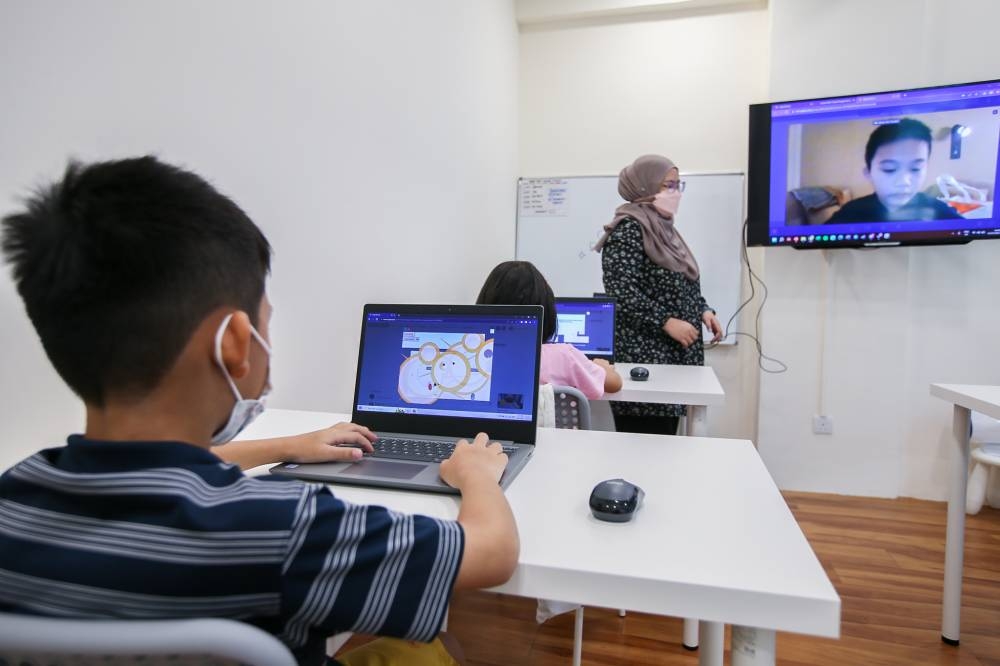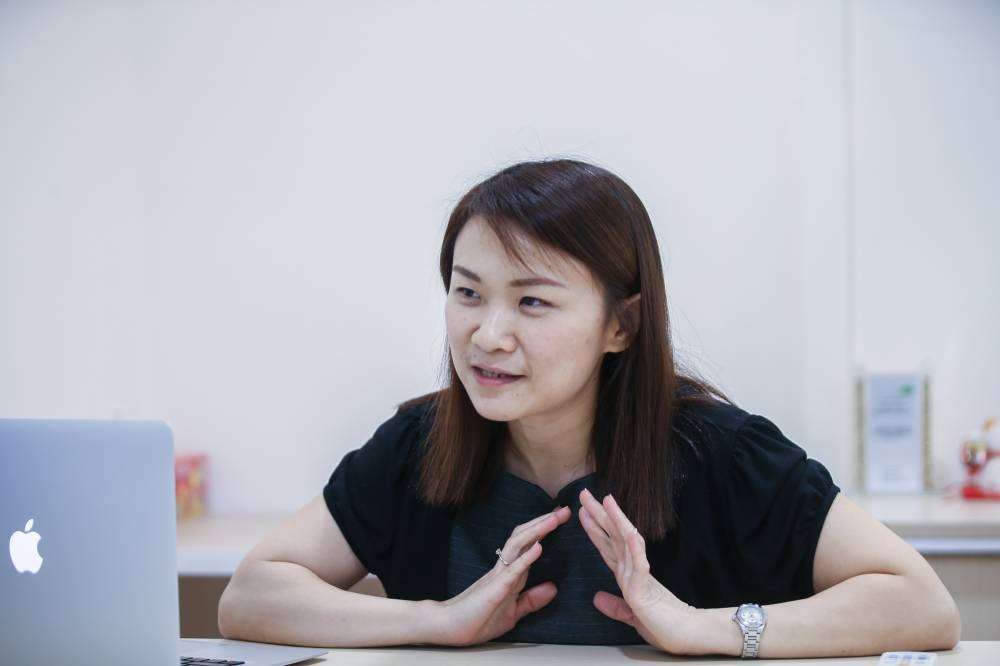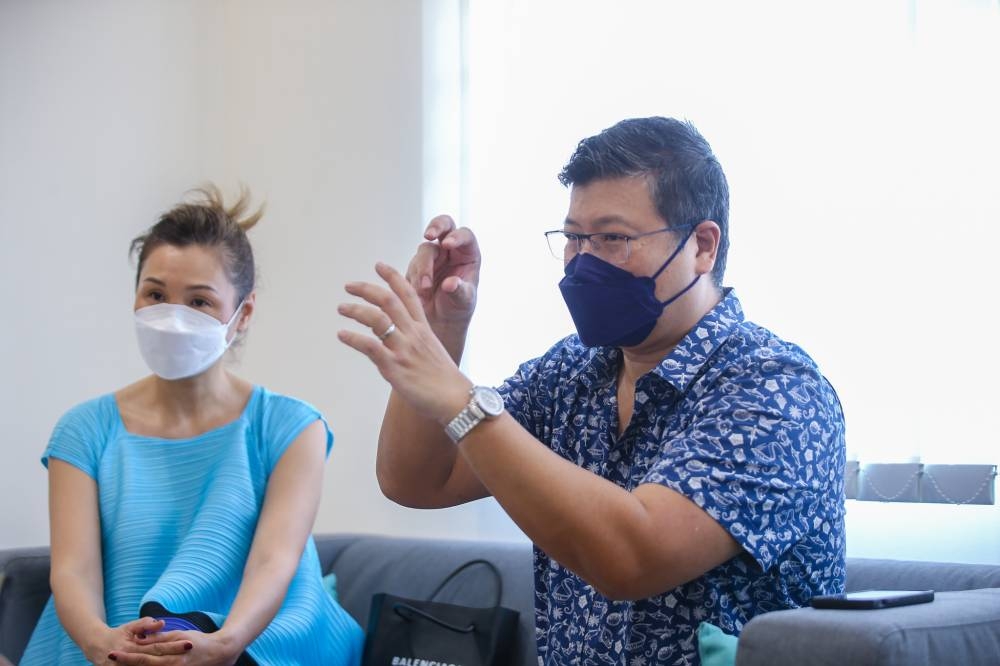PETALING JAYA, Aug 3 — In an increasingly digital age, coding literacy might be necessary for children to master to have some understanding of the tech around them.
“Coding is everywhere in our lives now, even your fridge or washing machine uses code to function,” said Christy Yong, director of Algorithmics Malaysia, a coding school for children and teenagers.
“This is why we feel it’s important to equip children with these skills at an early age, to make sure the next generation is prepared for the future.” Yong added that the process of learning coding in itself helps improve skills in logical thinking and problem solving.
“I think these skills are still lacking in traditional education systems, where the focus is more on spoon-feeding information and rote-learning.
“Coding also inspires creativity, because it’s both an art and science,” said the 43-year-old.

Algorithmics Malaysia’s own teaching staff come from a variety of backgrounds — the school’s Head of Teaching, Suraya Hilmi Hazim, is an earth sciences graduate.
“My first exposure to coding was a compulsory programming class in C++ during my foundation year in university,” said Suraya, 30.
“I learnt that as frustrating as it was, that was a subject I always looked forward to.” She echoed Yong’s sentiments of how coding has its uses across disciplines; from scientists trying to model how lava might flow out of a volcano, to geologists determining the chemical components of a rock.
“We even had a teacher who was writing a programme for his farm, to determine ideal fertiliser mixes and when best to water plants,” interjected Yong.
“So you see, even agriculture can benefit from coding!”
Gamifying education
Algorithmics was founded in 2016 by former McKinsey consultant Andrey LobaNovember The startup has since expanded its franchise to over 70 countries, including Brazil, Japan, South Africa and the UK.
In an interview with The Bell last year, Lobanov said he wanted to bring the best of both Russian and Western education systems.
He said that while Russian education focused on practice and tasks without providing the larger context, the tendency of Western systems to focus on engagement and ‘“gamification” may sometimes lack depth.
“From the Russian approach, we took the tasks and enhanced the practice.
“From the Western approach, we took the ‘gamification’ and the explanation of why we were teaching all of this,” added LobaNovember The result is a curriculum that emphasises project-based learning, and includes interactivity and games to keep students engaged.
As the first franchisee in Southeast Asia, Yong said this approach to teaching was what inspired her to set up a school in Malaysia.
“We felt aligned with Algorithmics’ modern teaching methods, which encourage kids to actively learn and engage with lessons,” she said.
“The platform (which Algorithmics hosts its courses on) is also useful; because it’s so personalised, students can follow a course at their own pace while still receiving guidance from our teachers.
“For example, teachers can monitor students’ progress as they learn, and even see how many attempts a student made to get a task or question right.” Algorithmics’ platform also connects its 300,000-odd students worldwide — the site allows students to share their projects, while also interacting with each other through comments and activities.
“I think this is the part that really gets our students excited, that they can talk to their friends across the world,” added Yong.

Lessons from the pandemic
Algorithmics Malaysia has both physical and virtual classes; the latter was a boon as the school opened just weeks before Malaysia’s first pandemic-related lockdown in March 2020.
When asked about the differences between in-person and online learning, Yong said it ultimately boiled down to an individual child’s learning preferences.
“We have very successful online students, and in fact some prefer it because they can immediately jump on to classes minus travel time.
“Other students might prefer more physical interaction, both with their teacher and friends,” she said.
Yong also credited the school’s teachers for keeping students engaged offline and online.
Coding to learn
Despite her enthusiasm for coding literacy among children, Yong is not interested in producing an army of future coders.
Rather, she believes that coding is a way of “learning how to learn”, and to pick up skills that are important in any industry.
“Anyone can Google information now, but what will make you stand out is the way you approach problems and whether you are able to communicate your solutions to others,” she added.
“I feel some parents still have that old mindset of focusing only on examinations and test scores, but we’ve been lucky that a lot of other parents are onboard with our approach.” “We’ve been lucky in the sense that a lot of other parents are onboard with the concept.” One such parent is David KK Tang, 52, who offered his breakdown of how a simple project allows children to gain problem-solving skills.

First, they’ll have to identify and assess the problem at hand, break it down to workable chunks, before deploying solutions that could work.
If a solution does not work, it’s back to the drawing board — a process Tang thinks helps teach children the art of resilience.
“The whole coding process is about trying and failing; the point is to continue trying after every failure instead of giving up completely.
“In this age of instant gratification, it’s important to teach kids to have this resilience,” he said.






















